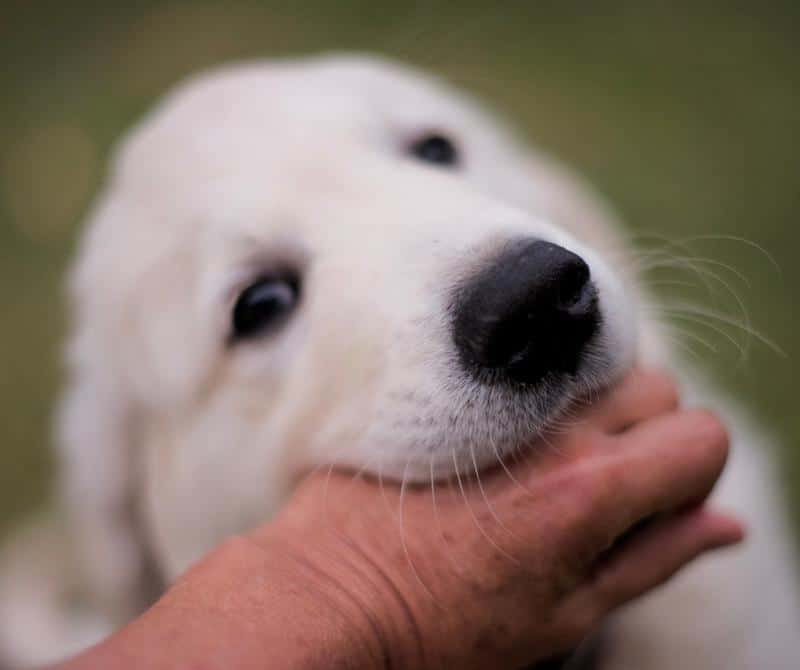
Welcoming a new puppy into your home is an exciting journey filled with cuddles, playtime, and unforgettable moments. However, it also comes with challenges, one of which is managing your teething puppy’s tendency to bite. Puppies explore the world with their mouths, but it’s important to teach them not to bite people during their teething phase. This article offers a step-by-step guide for new puppy owners on how to gently and effectively train their teething puppy not to bite.
Understanding Puppy Teething
Before we dive into the training steps, it’s crucial to understand why puppies bite. Teething is a natural process that occurs when puppies are around 3 to 6 months old, causing discomfort and a natural desire to chew on things to relieve their sore gums. Recognizing this behavior as a developmental stage rather than aggression is key to addressing it with patience and compassion.
Step 1: Provide Appropriate Chew Toys
The first step in training your teething puppy not to bite is to redirect their chewing behavior to appropriate items.
- Select a Variety of Chew Toys: Offer a range of chew toys that vary in texture and hardness. This variety helps satisfy your puppy’s need to chew and keeps them interested.
- Encourage Use of Chew Toys: Whenever your puppy starts to nibble on your fingers or clothing, gently redirect their attention to a chew toy. Praise them enthusiastically when they start chewing on the toy.
Step 2: Reinforce Gentle Play
Teaching your puppy what is acceptable during playtime is crucial for preventing biting behaviors.
- Use Positive Reinforcement: When your puppy plays gently without biting, immediately reward them with treats, praise, or more playtime. This reinforces the behavior you want to see.
- Implement Time-Outs: If your puppy bites too hard, say “Ouch!” in a firm yet calm voice and end playtime by stepping away for a few moments. This teaches your puppy that biting stops the fun.
Step 3: Consistency is Key
Consistency in your reactions to biting will help your puppy learn faster.
- Be Consistent in Your Responses: Everyone in the household should respond the same way to biting to avoid confusing your puppy.
- Repeat the Process: Training takes time and patience. Repeat the redirection and time-out processes consistently to reinforce the message.
Step 4: Socialize Your Puppy
Socialization with other dogs can play a significant role in teaching bite inhibition.
- Arrange Playdates: Allow your puppy to interact with well-behaved, vaccinated dogs. Puppies often learn to control the strength of their bite during play with other dogs.
- Attend Puppy Classes: Consider enrolling in puppy socialization classes, where they can learn to interact properly under the guidance of a professional.
Step 5: Manage Teething Discomfort
Addressing the discomfort of teething can reduce your puppy’s need to bite.
- Offer Frozen Toys: Frozen chew toys or wet, frozen towels can provide relief to sore gums.
- Consult Your Vet: If your puppy seems exceptionally uncomfortable, talk to your vet about pain relief options or tips for managing teething discomfort.
Step 6: Encourage Non-Biting Activities
Engaging your puppy in activities that don’t involve mouthing can help reduce biting.
- Increase Exercise: Regular exercise can help expend energy that might otherwise be used for nipping.
- Mental Stimulation: Puzzle toys, training sessions, and games can keep your puppy mentally stimulated and less likely to resort to biting out of boredom.
Step 7: Seek Professional Help if Needed
If your puppy’s biting persists or seems aggressive, it may be time to consult a professional.
- Consult a Professional Trainer: A certified dog trainer can offer personalized advice and training strategies based on observation of your puppy’s behavior.
- Veterinary Behaviorist: In cases of severe biting or aggression, a consultation with a veterinary behaviorist may be necessary.
Training your teething puppy not to bite requires understanding, patience, and consistency. By providing appropriate chew toys, reinforcing gentle play, ensuring consistency, socializing your puppy, managing teething discomfort, encouraging non-biting activities, and seeking professional help if needed, you can navigate this developmental stage successfully.
Remember, the goal is to build a trusting and respectful relationship with your puppy, guiding them through their teething phase with love and patience.
